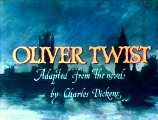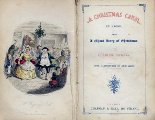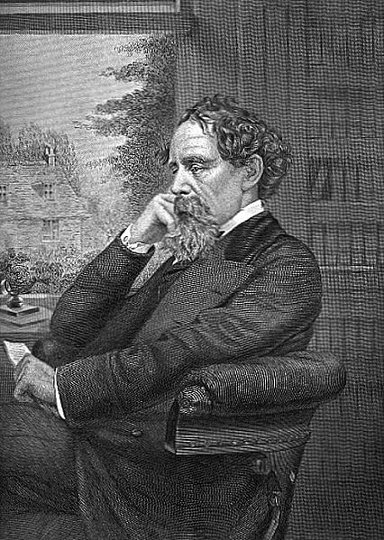Bicentenary of the birth of Charles Dickens
Charles John Huffam Dickens was born on 7th February 1812 in Portsmouth. Although he initially attended school, the defining moment of his life occurred when he was 12 years old. His father was sent to prison for bad debt and the family, except Charles, was also imprisoned. Charles was withdrawn from school and forced to work in a warehouse. This gave him first-hand experience of poverty and eventually he became the most influential voice of the working classes in his time. The effects he endured in his young life fed directly into two of his best known novels David Copperfield and Great Expectations.
His literary career began as a journalist and shorthand reporter getting work on his uncle’s paper the Mirror of Parliament. Having developed contacts in the press he became recognised as a parliamentary reporter and wrote for the Morning Chronicle. While still a reporter, he adopted the pseudonym of Boz and published his first book, a collection of stories Sketches by Boz in 1836. Many of his writings were originally published serially, in monthly instalments, a format of publication which Dickens himself helped popularise.
Eventually his main profession was as a novelist but he still continued his journalistic work editing periodicals and working for charitable organisations. He was an enthusiast of the theatre, wrote plays and gave readings, even performing in front of Queen Victoria. He travelled abroad extensively, wrote travel books and lectured against slavery in the United States.
Charles Dickens was a prolific 19th Century English author and considered to be the greatest of the Victorian period. At a time when Britain was a major economic and political power of the world, he highlighted the life of the poor and disadvantaged within society depicting the social classes and values of the time. He is credited with creating some of English literature’s most iconic characters and was well-known during his lifetime, being widely read throughout Europe.
He died on 9th June 1870 and is buried in the Poets' Corner of Westminster Abbey.





© Images are in the public domain.
Celebratory events are taking place throughout 2012 including:
Dickens & London exhibition at the Museum of London's Dickens exhibition which runs until the middle of June 2012
Charles Dickens' Birthplace Museum Charles Dickens' Birthplace Museum in Portsmouth has organised walks, displays and readings.
Charles Dickens Museum London Charles Dickens Museum London is holding reading groups, walks and conferences in celebration.
The Victoria and Albert Museum (V&A) has a special section on their website Victoria and Albert Museum dedicated to Dickens with many links to his manuscripts, illustrations of his novels, his influence on Victorian life and events such as a free gallery talk Charles Dickens and David Copperfield on Thursday 22nd March 2012.
The Guardian newspaper (online) has a special section, Charles Dickens at 200 that includes some digested reads of Dickens novels, podcasts and walking routes through the City of London to see key sites from novels. The site aims to explore the writer's life through stories, videos, audio and galleries.
Collections
- Letters and Manuscripts of Charles Dickens: 13 volumes containing letters from Dickens, letters to Mrs Dickens and a manuscript shorthand book, in the hand of Charles Dickens.
- Elizabeth Gaskell Manuscript Collection: correspondence from Charles Dickens to Elizabeth Gaskell and an autograph manuscript of Dickens' A Child's Dream of a Star.
- Illuminated Manuscript of Dickens' A Christmas Carol: a calligraphic manuscript of Charles Dickens short novel A Christmas Carol, written and illuminated by the Manchester artist Alan Tabor for the publishers George G. Harrap & Co. of London.
- Correspondence of Charles Dickens, with related material: as part of a collection purchased from the library of Dr Eric G. Millar in 1957 this includes 170 autograph letters from Charles Dickens to various correspondents along with a variety of manuscript transcripts and material related to the collection.
- Arthur Hopcraft Papers: he was one of the great scriptwriters of his day and this collection includes material relating to his broadcast and published works. He was well known for his TV plays and for his small screen adaptations including Hard Times and Bleak House.
- Gilbert Foyle Dickens Collection: a collection of 33 Dickens first editions, the works remain in the original serialised form, complete with advertisements.
- Archives of The Longman Group: includes books published by or connected with the firm along with autograph letters from Longman authors 1799-1900 including Charles Dickens.
- Papers of Percy Noble: Percy Noble (d 1937) was a collector of letters and autographs and his collection includes a holograph fragment of Mrs Lirriper's Lodgings, by Charles Dickens.
- Morley Letters: photocopies of autograph letters to Henry Morley concerning the business of the periodical Household Words. Household Words was the creation of Charles Dickens and he used the journal to communicate personally to his large circle of readers. He described it as a 'weekly miscellany of general literature'.
- Papers of J.G. Sharps: the archive of J.G. Sharps includes material which will be of value to those interested in the life and work of Elizabeth Gaskell and also includes some published material including two Christmas numbers of Charles Dickens's periodical All the Year Round (1863-4).
- Garrick Club: the papers of Garrick Club comprise one volume containing playbills for the Theatre Royal, Covent Garden between 28 September 1825 and 23 June 1826 with occasional notices of cast changes.
Copac
If you are interested in finding secondary source material on this topic then you can search Copac for related materials. Copac includes the catalogues of the University of Cambridge, University of Oxford, British Library and V&A National Art Library in particular, which all have large amounts of Dickens related material.


